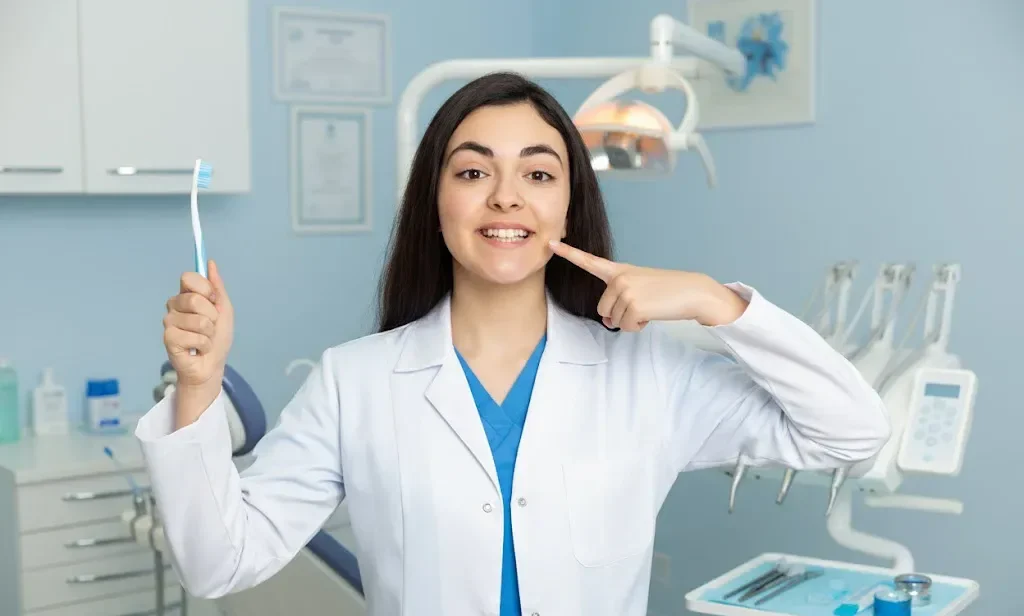Knowing how to keep a smile healthy and happy is about so much more than brushing twice a day. Because of the complex nature of oral health, it is all too easy to overlook key details, such as how to care for the gums as distinct from the teeth, and that is where issues quickly begin to occur.
With happy smiles in mind, we’ve created a guide that is designed to educate patients and to help practice managers offer new ways to help every patient.
Flossing is a key step
There are so many gaps between even the most regular, photogenic set of teeth that it is a wonder that more people don’t know the importance of flossing. Food debris can easily get caught in tiny gaps and pits, resulting in the accumulation and proliferation of bacteria and plaque that regular brushing alone is unable to address.
Dental practices that recommend a specific make and gauge of floss and then offer it for sale at the reception desk are able to improve patient outcomes. Patients who floss after meals will be able to take a massive step towards optimal oral health for many years to come. As with many things in life, it’s small, consistent actions that make all the difference.
Washing and rinsing matters
One of the most common mistakes that everyday people make is to use mouthwash immediately after brushing their teeth, particularly when brushing at night right before bed. While it may be convenient to get everything done in one hit, the mouthwash is doing nothing more than washing away the fluoride that the toothpaste has just applied.
Dental practices that recommend a fluoride-based mouthwash and have it in stock for sale at the end of each appointment have a unique opportunity. Not only will it help patients get exactly what they need, but it is also the perfect time to educate them on when best to wash and rinse with mouthwash.
Interdental brushing is important
Dental practices should always look to have a steady supply of different sizes and shapes of interdental toothbrush that can then be offered to patients. These types of brushes are designed to get into all of those hard-to-reach places that conventional brushes can never touch. They can also provide a more robust, in-depth clean than flossing alone. Ideal when you want to address issues in and around the gum line that will ultimately lead to gum disease and tooth decay if left unchecked.
Healthy living means a healthy smile
We completely understand that no one wants to be lectured or told to change major aspects of their lifestyle, even if big changes like quitting smoking are known to protect oral health. Rather than putting too much pressure on yourself by trying to change everything at once, making small shifts with the aim of gradually building momentum may make things more achievable.
Cutting back on sugary snacks and acidic foods and drinks will help to preserve the tooth enamel that is responsible for the natural whiteness every happy smile needs. At the same time, swapping out a can of cola for a glass of water has been shown to help wash out food debris and neutralise the balance in the mouth.
The role of dental specialists
Dental practice managers who advertise routine services and regular check-up plans can make a real difference to positive patient outcomes. By raising awareness and providing education regarding all things oral health, they can help patients from all walks of life achieve the healthy, happy smiles that so many of us take for granted. Not only that, but by focusing on education, they can help every patient avoid the need for cosmetic and restorative treatments simply by getting the basics of good oral care right.
For example, did you know that if you have had an acidic food or drink, you should wait for approximately 1 hour before brushing? This is because the high levels of acidity weaken the grip of the enamel to the structure of the teeth, making it easier for hard brushing to damage the teeth when what you think you’re doing is taking good care of them.
Conclusion
Dental practices that educate their patients on how to care for their teeth between brushing can make a substantial difference to patient outcomes. Patients who make use of specialist supplies that are available at the practice can make sure that they get everything they need from a single point of contact.
